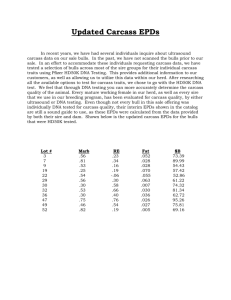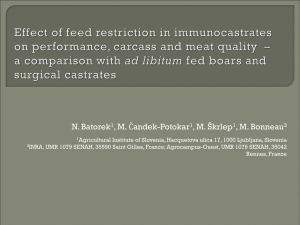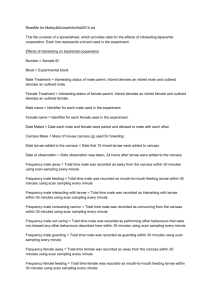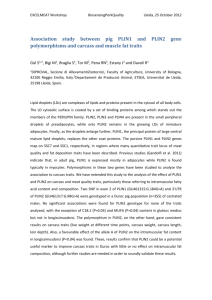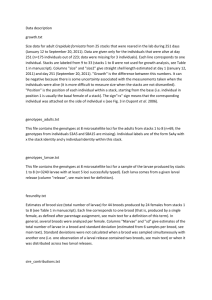README.
advertisement
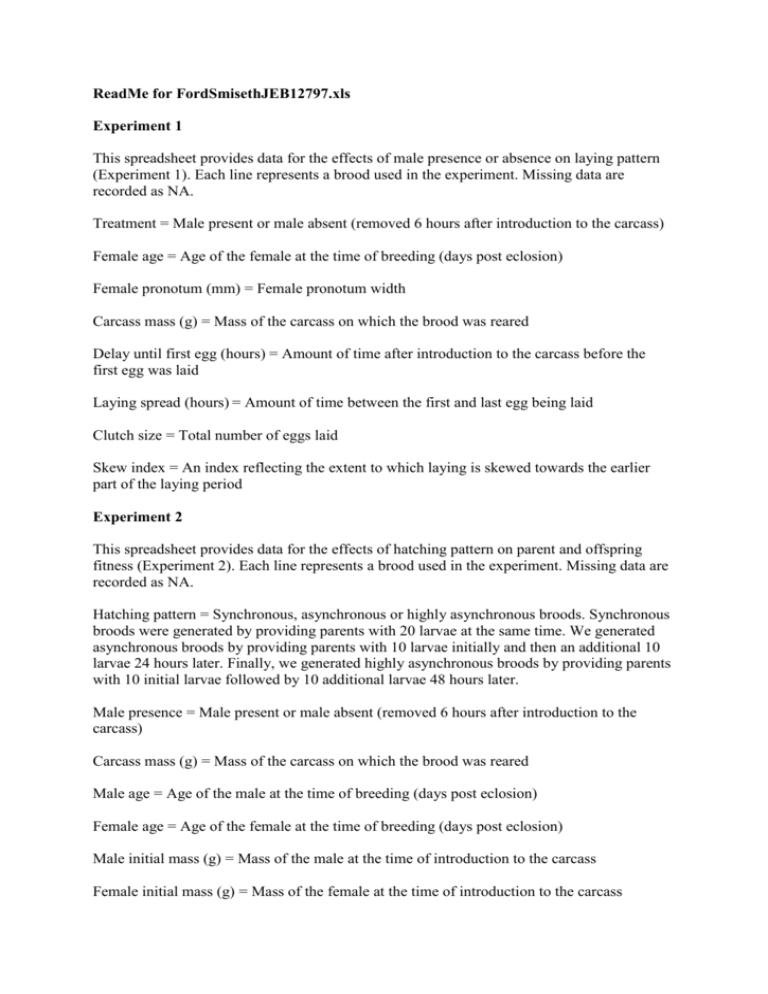
ReadMe for FordSmisethJEB12797.xls Experiment 1 This spreadsheet provides data for the effects of male presence or absence on laying pattern (Experiment 1). Each line represents a brood used in the experiment. Missing data are recorded as NA. Treatment = Male present or male absent (removed 6 hours after introduction to the carcass) Female age = Age of the female at the time of breeding (days post eclosion) Female pronotum (mm) = Female pronotum width Carcass mass (g) = Mass of the carcass on which the brood was reared Delay until first egg (hours) = Amount of time after introduction to the carcass before the first egg was laid Laying spread (hours) = Amount of time between the first and last egg being laid Clutch size = Total number of eggs laid Skew index = An index reflecting the extent to which laying is skewed towards the earlier part of the laying period Experiment 2 This spreadsheet provides data for the effects of hatching pattern on parent and offspring fitness (Experiment 2). Each line represents a brood used in the experiment. Missing data are recorded as NA. Hatching pattern = Synchronous, asynchronous or highly asynchronous broods. Synchronous broods were generated by providing parents with 20 larvae at the same time. We generated asynchronous broods by providing parents with 10 larvae initially and then an additional 10 larvae 24 hours later. Finally, we generated highly asynchronous broods by providing parents with 10 initial larvae followed by 10 additional larvae 48 hours later. Male presence = Male present or male absent (removed 6 hours after introduction to the carcass) Carcass mass (g) = Mass of the carcass on which the brood was reared Male age = Age of the male at the time of breeding (days post eclosion) Female age = Age of the female at the time of breeding (days post eclosion) Male initial mass (g) = Mass of the male at the time of introduction to the carcass Female initial mass (g) = Mass of the female at the time of introduction to the carcass Male mass after caring (g) = Mass of the male at the time of removal from the carcass Female mass after caring (g) = Mass of the female at the time of removal from the carcass Male pronotum (mm) = Male pronotum width Female pronotum (mm) = Female pronotum width Male half days present = The number of observations for which the male was with the brood (observations were conducted twice each day) Female half days present = The number of observations for which the female was with the brood (observations were conducted twice each day) Male age at death = Age of the male at the time of death (days post eclosion) Female age at death = Age of the female at the time of death (days post eclosion) Brood mass at dispersal (g) = Total mass of the entire brood at the time of dispersal from the carcass Half days as larvae = Number of half days spent developing on the carcass as larvae Initial larval mass each (g) = Average mass of a larva at the time of introduction to the carcass Number dispersing = Number of larvae surviving to dispersal in each brood Offspring pronotum (mm) = Average pronotum width of offspring surviving to become adults in each brood Standard deviation in offspring pronotum = Standard deviation in pronotum widths of offspring surviving to become adults in each brood Son age at death = Age of randomly selected male offspring at the time of death (days post eclosion) Daughter age at death = Age of randomly selected female offspring at the time of death (days post eclosion) Son pronotum (mm) = Pronotum width of randomly selected male offspring Daughter pronotum (mm) = Pronotum width of randomly selected female offspring
